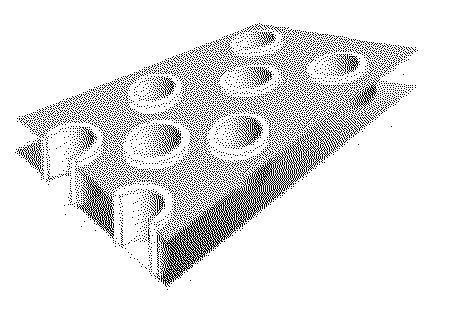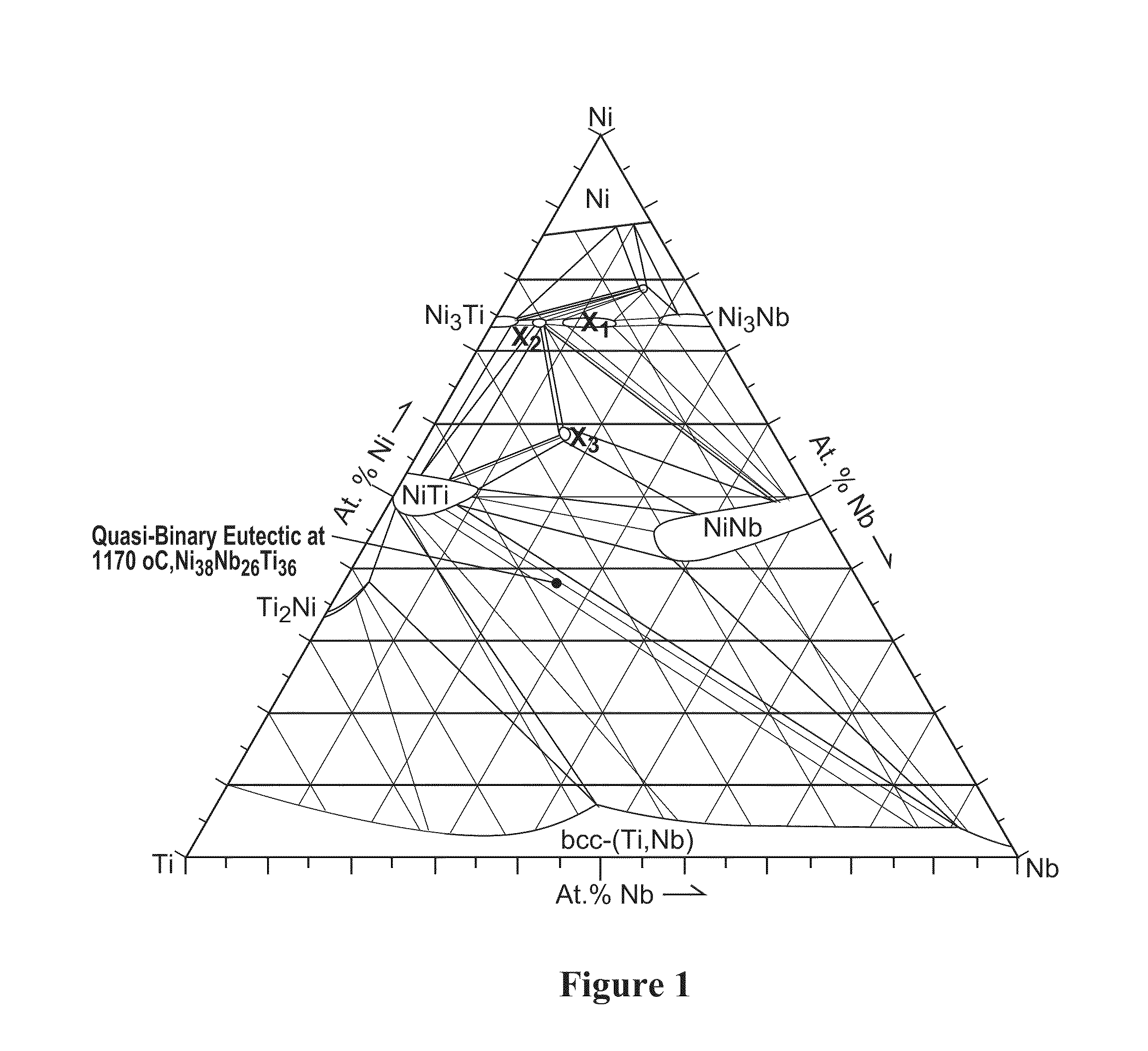Manufacture of Shape-Memory Alloy Cellular Materials and Structures by Transient-Liquid Reactive Joining
a technology of shape memory and alloy, which is applied in the direction of manufacturing tools, soldering devices, prosthesis, etc., can solve the problems of hypersensitive rate dependence, inability to manufacture large monolithic nitinol sections, and material fabrication that has been exceedingly difficult until recently, etc., to achieve excellent shape memory, low density, and the effect of reducing the density
- Summary
- Abstract
- Description
- Claims
- Application Information
AI Technical Summary
Benefits of technology
Problems solved by technology
Method used
Image
Examples
Embodiment Construction
[0046]The following description is primarily directed to NiTi and pure niobium as the brazing metal. However, this emphasis is merely for descriptive purposes, and the present transient-liquid reactive joining method extends to other SMAs and brazing metals known to persons skilled in the art, as well as to pure niobium alloyed with any metal capable of forming an alloy with niobium.
[0047]The method of the present invention comprises placing individual nitinol structures in contact with a suitable reacting brazing metal, such as niobium and / or nickel, and heating the nitinol structure and brazing metal at an elevated temperature under vacuum conditions. Niobium reacts with nitinol at a temperature of about 1170° C. which is below the melting point (1310° C.) of nitinol. It has been found that when a suitable brazing metal, such as niobium, is brought into contact with conventional wrought Nitinol at elevated temperature, interdiffusion between NiTi and pure Nb quickly leads to the f...
PUM
| Property | Measurement | Unit |
|---|---|---|
| tensile strain | aaaaa | aaaaa |
| tensile strain | aaaaa | aaaaa |
| temperature | aaaaa | aaaaa |
Abstract
Description
Claims
Application Information
 Login to View More
Login to View More - R&D
- Intellectual Property
- Life Sciences
- Materials
- Tech Scout
- Unparalleled Data Quality
- Higher Quality Content
- 60% Fewer Hallucinations
Browse by: Latest US Patents, China's latest patents, Technical Efficacy Thesaurus, Application Domain, Technology Topic, Popular Technical Reports.
© 2025 PatSnap. All rights reserved.Legal|Privacy policy|Modern Slavery Act Transparency Statement|Sitemap|About US| Contact US: help@patsnap.com



